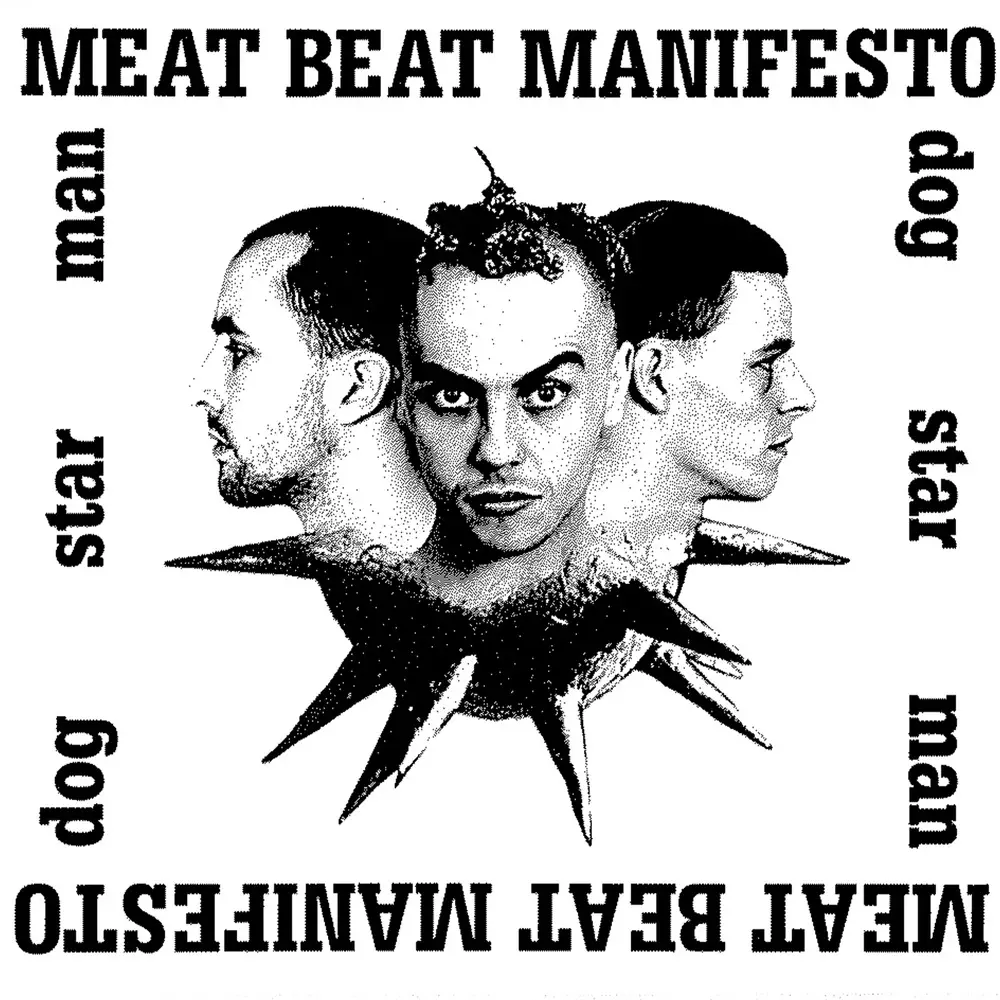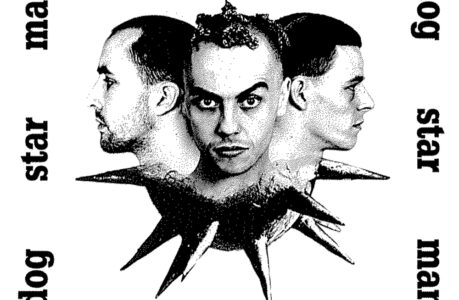Introduction
Meat Beat Manifesto has carved its name into the annals of electronic music history with a bold and unapologetic sonic identity. Born out of the UK’s vibrant underground scene in the late 1980s, the group, led by Jack Dangers, has continually pushed the boundaries of sound manipulation, sampling, and rhythmic experimentation. This essay delves into the multifaceted journey of Meat Beat Manifesto, exploring its history, music style, key personnel, essential albums and tracks, as well as its enduring legacy and influence on the electronic music landscape.
History and Development
Emerging from the fertile grounds of post-punk and industrial music, Meat Beat Manifesto was founded in 1987 by Jack Dangers. Hailing from Swindon, England, Dangers initially embarked on a solo project, experimenting with tape loops, samples, and electronic beats. The early sound of Meat Beat Manifesto drew influences from industrial pioneers like Throbbing Gristle and Cabaret Voltaire, blending abrasive textures with infectious grooves.
Throughout the late 1980s and early 1990s, Meat Beat Manifesto solidified its reputation as a trailblazer in the electronic music scene. The group’s innovative use of sampling technology, coupled with politically charged lyrics, captured the attention of listeners seeking music that challenged conventions and pushed boundaries.
Type of Music
Meat Beat Manifesto defies categorization with a sonic palette that transcends traditional genre boundaries. At its core, the group’s music is a fusion of various styles, ranging from industrial and techno to dub and ambient. What sets Meat Beat Manifesto apart is not only the breadth of genres it encompasses but also the innovative ways in which these elements are combined and manipulated.
Industrial Roots:
Rooted in the industrial music scene of the late 1980s, Meat Beat Manifesto’s early sound bears the hallmarks of the genre’s abrasive textures and dystopian atmospheres. Tracks like “God O.D.” from their debut album “Storm the Studio” exemplify this aesthetic, with distorted vocals, metallic percussion, and layers of industrial noise creating a sense of chaos and unease. Industrial music provided a fertile ground for experimentation, allowing Meat Beat Manifesto to push the boundaries of conventional song structures and sonic textures.
Techno and Electronic Beats:
As electronic music continued to evolve in the 1990s, Meat Beat Manifesto embraced the burgeoning techno scene, incorporating elements of house, acid, and breakbeat into their sound. Tracks like “Radio Babylon” and “It’s The Music” from albums like “Satyricon” and “99%” exemplify this fusion of electronic beats and infectious grooves. By harnessing the power of drum machines and sequencers, Meat Beat Manifesto created music that was not only danceable but also intellectually stimulating, blurring the lines between the club and the avant-garde.
Dub and Ambient Influences:
In addition to its industrial and techno roots, Meat Beat Manifesto’s music often incorporates elements of dub and ambient, adding layers of atmosphere and texture to their sound. Tracks like “Helter Skelter” and “I Got The Fear (Part 5)” from the album “Subliminal Sandwich” showcase the group’s penchant for spacious soundscapes and hypnotic rhythms. Drawing inspiration from dub pioneers like Lee “Scratch” Perry and King Tubby, Meat Beat Manifesto explores the sonic possibilities of echo, reverb, and spatialization, creating music that is as immersive as it is experimental.
Experimentalism and Sound Manipulation:
At the heart of Meat Beat Manifesto’s music lies a spirit of experimentation and innovation. The group’s use of sampling technology and sound manipulation techniques sets them apart from their peers, allowing them to deconstruct and reconstruct audio in novel ways. Tracks like “Psyche-Out” and “Electric People” from the album “Autoimmune” exemplify this approach, with fragmented samples, glitchy textures, and intricate rhythms creating a sense of disorientation and intrigue. By treating the studio as a laboratory for sonic exploration, Meat Beat Manifesto continues to push the boundaries of what is possible in electronic music.
Key Personnel
At the heart of Meat Beat Manifesto is Jack Dangers, the creative force behind the project. Dangers’ visionary approach to sound manipulation and sampling techniques has been instrumental in shaping the group’s distinctive sound. Over the years, Dangers has collaborated with various musicians and artists, contributing to the ever-evolving sonic landscape of Meat Beat Manifesto.
Essential Albums
1. “Storm the Studio” (1989)
This debut album is a sonic assault that laid the groundwork for Meat Beat Manifesto’s future explorations. Fusing industrial rhythms with hip-hop sensibilities, “Storm the Studio” remains a landmark release in electronic music history.
2. “Satyricon” (1992)
“Satyricon” showcases the group’s versatility, with tracks ranging from hypnotic grooves to cacophonous noise experiments. It’s a testament to Meat Beat Manifesto’s ability to defy genre conventions and create music that is both challenging and captivating.
3. “Subliminal Sandwich” (1996)
With “Subliminal Sandwich,” Meat Beat Manifesto delves into deeper, more ambient territory. This double album is a sprawling sonic journey that rewards repeated listens, revealing new layers of detail with each play.
Essential Tracks
1. “Mindstream”
A cornerstone of the group’s discography, “Mindstream” is a hypnotic blend of pulsating beats and eerie atmospherics. Its infectious groove has made it a favorite among fans and DJs alike.
2. “Radio Babylon”
“Radio Babylon” is a relentless assault of breakbeats and distorted samples, punctuated by ominous basslines. It’s a prime example of Meat Beat Manifesto’s ability to create music that is simultaneously danceable and thought-provoking.
3. “Prime Audio Soup”
Featured prominently in the movie “The Matrix,” “Prime Audio Soup” is a high-energy track that showcases the group’s mastery of rhythm and texture. Its frenetic pace and cinematic atmosphere make it a standout in Meat Beat Manifesto’s catalog.
Legacy and Significant Reviews
Meat Beat Manifesto’s influence extends far beyond the confines of the electronic music scene. Their innovative approach to sound design and production techniques has left an indelible mark on popular culture, influencing artists across genres.
Reviews:
Discography: Exploring the Evolution of Meat Beat Manifesto’s Sound
Meat Beat Manifesto’s discography is a testament to the group’s enduring creativity and innovation. Spanning over three decades, their body of work reflects a continuous evolution in sound and style, from the gritty industrial landscapes of their early albums to the more expansive and experimental territories explored in their later releases. Let’s delve into their discography, album by album, with comments on each.
1. “Storm the Studio” (1989)
- Comments: This debut album introduced the world to Meat Beat Manifesto’s unique sonic vision. Combining elements of industrial, hip-hop, and electronic music, “Storm the Studio” is a raw and uncompromising statement of intent. Tracks like “Strap Down” and “God O.D.” set the tone for the group’s future explorations, with distorted samples and pounding rhythms creating a sense of urgency and aggression.
2. “99%” (1990)
- Comments: Building on the foundation laid by their debut, “99%” sees Meat Beat Manifesto refining their sound and expanding their sonic palette. Tracks like “Mindstream” and “Re-Animator (Part 1)” showcase the group’s mastery of rhythm and texture, with hypnotic grooves and intricate samples drawing listeners into a world of dark, dystopian soundscapes.
3. “Satyricon” (1992)
- Comments: “Satyricon” marks a significant evolution in Meat Beat Manifesto’s sound, with the group embracing more diverse influences and experimenting with new techniques. From the pulsating rhythms of “Radio Babylon” to the ethereal atmospheres of “Edge of No Control (Part 1),” the album is a sonic journey that defies easy categorization, blending elements of techno, dub, and ambient into a seamless whole.
4. “Subliminal Sandwich” (1996)
- Comments: With “Subliminal Sandwich,” Meat Beat Manifesto delves into deeper, more ambient territory, creating a sprawling double album that rewards repeated listens. Tracks like “Prime Audio Soup” and “She’s Unreal” showcase the group’s ability to create music that is both atmospheric and emotionally resonant, with layers of sound building and receding like waves on a shore.
5. “Actual Sounds + Voices” (1998)
- Comments: “Actual Sounds + Voices” finds Meat Beat Manifesto embracing a more song-oriented approach, with Jack Dangers’ vocals taking center stage alongside the group’s trademark beats and samples. Tracks like “Acid Again” and “What Does It All Mean?” combine infectious hooks with thought-provoking lyrics, blurring the lines between pop sensibility and avant-garde experimentation.
6. “RUOK?” (2002)
- Comments: “RUOK?” sees Meat Beat Manifesto returning to their roots with a collection of hard-hitting tracks that harken back to the industrial sound of their early albums. Tracks like “Hellfire” and “Spinning Round” are relentless assaults of noise and rhythm, with distorted vocals and jagged beats creating a sense of unease and intensity.
7. “Autoimmune” (2008)
- Comments: “Autoimmune” finds Meat Beat Manifesto continuing to push the boundaries of electronic music, with tracks like “Guns ‘N’ Lovers” and “Less” showcasing the group’s mastery of rhythm and texture. Drawing on influences ranging from dubstep to glitch, the album is a testament to the group’s willingness to embrace new technologies and sonic innovations.
8. “Impossible Star” (2018)
- Comments: “Impossible Star” sees Meat Beat Manifesto once again reinventing themselves, with a collection of tracks that blend elements of glitch, IDM, and ambient into a mesmerizing sonic tapestry. Tracks like “One By One” and “T.M.I.” are dense and complex, with layers of sound intertwining and morphing in unexpected ways.
Similar Bands
For those enamored with the sonic explorations of Meat Beat Manifesto, several other acts offer similarly boundary-pushing music:
- Front 242: Known for their pioneering work in the industrial and electronic genres, Front 242‘s abrasive rhythms and political lyrics resonate with fans of Meat Beat Manifesto.
- The Orb: Combining ambient textures with danceable beats, The Orb crafts immersive sonic landscapes that echo the experimental spirit of Meat Beat Manifesto.
- Autechre: With their intricate rhythms and abstract soundscapes, Autechre pushes the boundaries of electronic music, appealing to fans of avant-garde acts like Meat Beat Manifesto.
Meat Beat Manifesto continues to defy expectations and push the boundaries of electronic music, cementing their status as pioneers of sonic innovation. As the landscape of music evolves, their influence remains palpable, inspiring generations of artists to explore the limitless possibilities of sound.
Conclusion
Meat Beat Manifesto’s journey is one of sonic exploration and innovation. From humble beginnings in the UK underground scene to international acclaim, the group has continually pushed the boundaries of electronic music, leaving an indelible mark on the landscape of popular culture. With their pioneering use of sampling technology, intricate rhythms, and politically charged lyrics, Meat Beat Manifesto remains a beacon of creativity and experimentation in the ever-evolving world of music.

